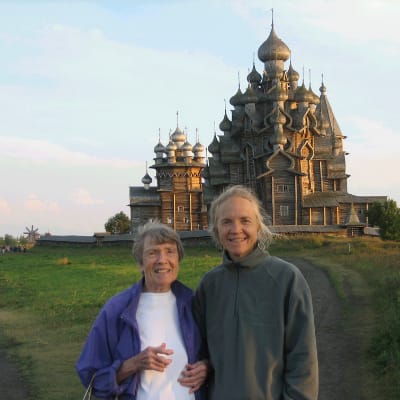
Marcia shared her story in October of 2021.
My mother, Opal Sloane, approached death the same way she had lived her life: She was breathtakingly practical.
In her late 90s, my mother found that day-to-day living was getting harder and harder. She had always loved gardening, eating out, and using her computer, but carpal tunnel syndrome made it difficult for her to use her hands. Her weight dropped to 85 pounds, her appetite decreased and just visiting friends or going to the main dining room of her senior residence facility took an enormous toll on her. She had always been a very independent person and had only recently stopped driving because she struggled to get in and out of her car. Soon, she suspected, she wouldn’t be able to leave her apartment.
Over the years my mother had researched voluntarily stopping eating and drinking (VSED) using resources provided by Compassion & Choices. In 2017, at the age of 98 and feeling she’d had a good and full life, she decided it was time to go. Her husband, my father, had died many years prior, and as her only child and closest living relative, I wanted to support her wishes and do all I could to help her die in the way she wanted.
She and I set the start date for three months in the future to be convenient for my work schedule and give her time to finalize her affairs and get organized for however long the process would take. She’d recently seen her doctor, who had written her a diagnosis of “failure to thrive.” When she asked him about VSED and how long the process usually takes, the doctor estimated two weeks to a month, perhaps less for her.
As it turned out, my mother’s VSED journey took seven days. My husband Todd and I were her caregivers. Unfortunately, hospice was not able to support my mother through VSED because she did not have a diagnosis that qualified hospice for reimbursement from Medicare. Still, there was no way my mother would be deterred. She had the support she needed from me, her doctor, the nurse at her facility and the strength of her own resolve.
On the first day, Mom informed us that for several days prior, she had been eating less and not missing food. “I’m telling myself I don’t need food and I don’t need this world,” she said. Together, we looked at photos of her relatives, my father’s relatives, and me, her and my father together.
On day three, following a short bout of dry heaving, she was back to herself, barking commands and telling me to confirm her cable provider had discontinued service. I had brought some CDs with music for her to choose from. She preferred solo piano music, spacious and slow without a regular pulse. Two days later, I played my cello for her as she drifted off to sleep.
That evening, my mother showed me hand signs she had come up with in the event she was no longer able to speak: Tracing her mouth with her finger meant she needed her mouth swabbed. Making a fist and moving her arm meant she needed morphine. The a-okay finger sign meant yes. Waving her finger meant no.
The evening of the sixth day, Mom traced her lips to indicate she wanted her mouth swabbed – her final request. The next morning, she took her last breath in her sleep.
All her life my mother had been a pragmatist, with an unrelenting drive to anticipate and prepare for all situations that might befall her. My father liked to joke that she got her exercise jumping to conclusions. Yet her extreme pragmatism served her very well in planning her death. Today, I deeply appreciate having witnessed the preparation, clarity and fearless resolve that marked my mother’s choice to VSED. Her journey took some of the mystery out of death and showed me a way I might someday choose to die.
Click here to read Marcia’s journal about her mother’s VSED journey.
Mail contributions directly to:
Compassion & Choices Gift Processing Center
PO Box 485
Etna, NH 03750